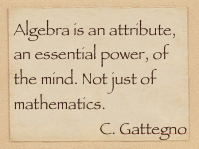The mathematics of fountain design: a multiple-centres activity by Marshall Gordon describes a study about a variation of differentiated instruction in mathematics which caters to students of all ability needs. The lesson is about transforming quadratic equation. The article was published online in January 4, 2013 in the journal Teaching Mathematics and its Application. Here’s the abstract of the article. Use the email below to get access to the journal article.
Teachers of mathematics recognize the difficulty of reaching every student when the range of student abilities puts a considerable strain on the classroom discussion and time. In a response to the problem, students are grouped so that those with greater mathematical aptitude help those who have difficulties. While this approach is to be appreciated, it tends to mean that the more able students have less opportunity to explore further their own initiatives in mathematics, while those who have more difficulties find themselves on the receiving end with little opportunity to be in the role of enriching the mathematics experience for everyone, including themselves. A ‘multiple-centres’ approach is designed to overcome these problems. In this variation of differentiated instruction, all students get the chance to engage the material from a vantage point and at a level they find interesting and challenging as a consequence of their selecting extensions of the teacher’s initial focus problem. This article will present some findings of 11th year (roughly Fifth Form) average mathematics students at a US Independent School in transforming the standard quadratic equation to represent fountain parabolic trajectories, which was the teacher’s focus problem, along with some multiple-centre investigations they chose. A further set of opportunities with commentaries providing additional centres for student inquiry are included.
- © The Author 2013. Published by Oxford University Press on behalf of The Institute of Mathematics and its Applications. All rights reserved. For permissions, please email: journals.permissions@oup.com
